Published Sep 29, 2019
How The Smithsonian Restored the Classic Enterprise Model
The experts on the case took us through their process.
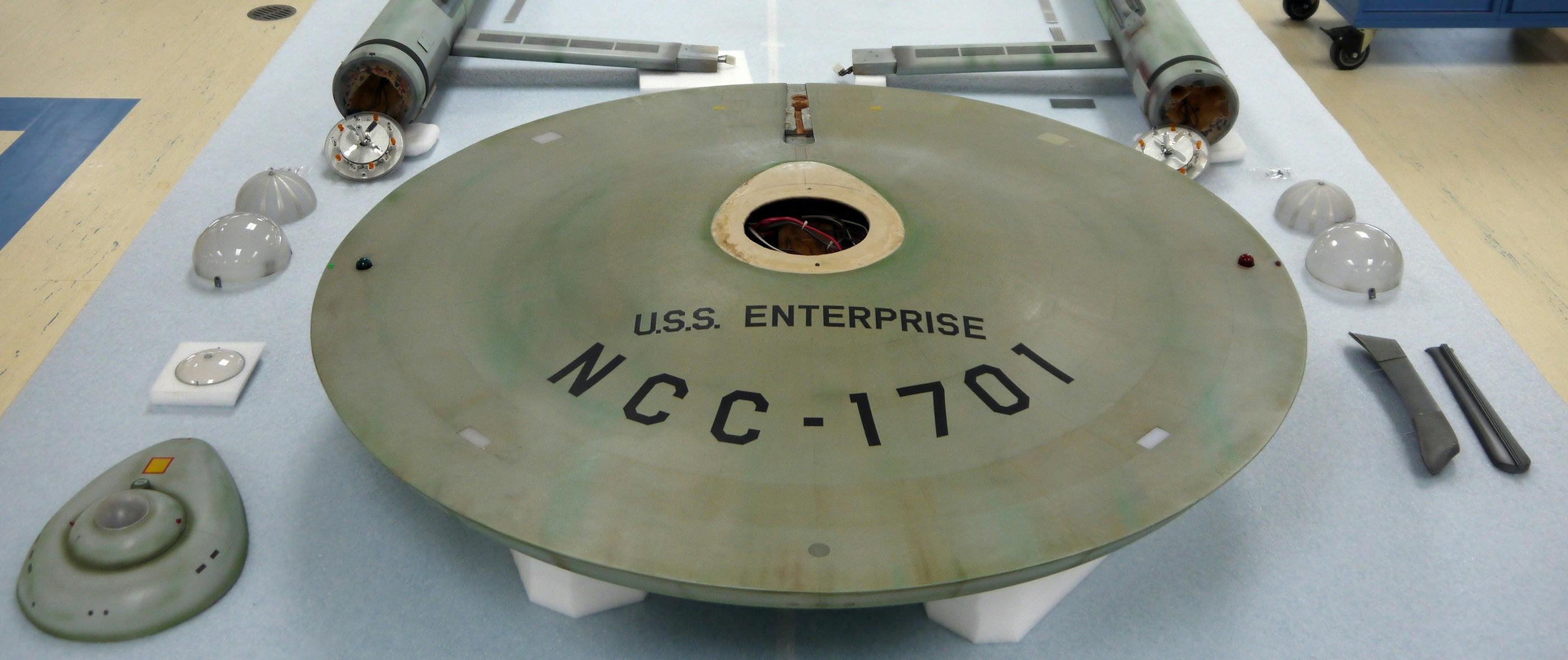
This post originally ran in January of 2016.
Stardate 1601.28: After a year of extensive research, conservation work on the original studio model of the USS Enterprise is now underway in the Museum’s spacedock. Our goal is to stabilize the model and return it to its appearance from August of 1967, during the filming of the episode "The Trouble with Tribbles," which marked the last known modification of the ship during the production of Star Trek. The model appeared in all 79 episodes of The Original Series, and was donated to the Smithsonian in 1974. It will go back on public display in the Boeing Milestones of Flight Hall this year, in time for the Museum’s 40th birthday in July and the 50th anniversary of Star Trek in September. Visitors to our third annual Open House at the Steven F. Udvar-Hazy Center on Saturday, January 30 can catch a glimpse of the work in progress.

To replicate the subtle, intricate paint detailing of the model’s original design, we welcomed two new members to the project’s expert advisory committee. Academy Award-winner Bill George from Lucasfilm’s Industrial Light & Magic (ILM) and Kim Smith with Creature Art & Mechanics Digital (CAMd) and formerly ILM, will join original committee member John Goodson, also of ILM. Combined, the three have decades of experience on more than 100 movies, including eight Star Trek films (and a long time ago in a galaxy far, far away, four episodes of Star Wars). Kim also has an unexpected family connection to our Boeing Milestones of Flight Hall. Her father, the experienced mural artist William A. Smith, advised artist Robert “Bob” McCall as he worked on one of the gallery’s murals, "The Space Mural—A Cosmic View."
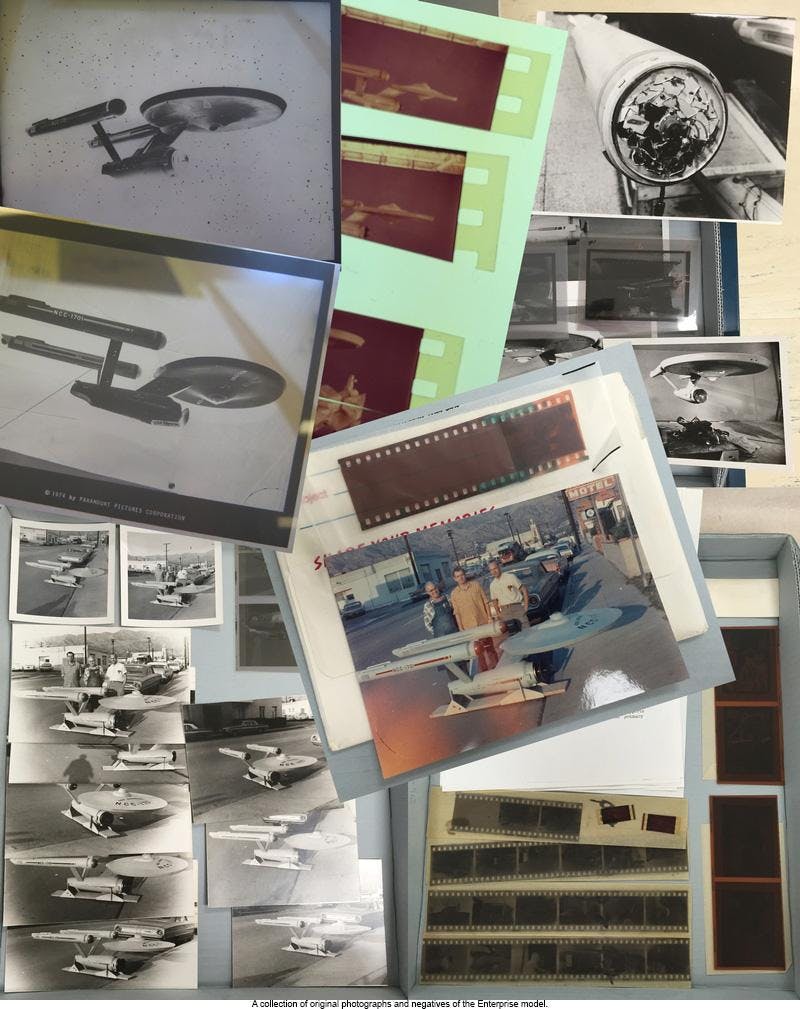
The final painting of the Enterprise model will begin in April, using newly discovered reference photos from our appeal to Trek fans in the fall. The team will also build new nacelle domes with LED lights to mimic the spinning effect seen on television. For reference, they will first build a 1:1 mock-up of the original mechanism, which utilized mirrors, motors, nails, and Christmas lights. Conservator Ariel O’Connor explains, “Although the original nacelle dome lights did not survive, we can replicate the original effect in a way that is safe to install on the model. The LED lights can be programmed to match the original VFX footage while eliminating the burnt-out bulbs, extreme heat, and motor problems that troubled the original lights. It is a wonderful solution to re-light the nacelles while ensuring the model’s safety and longevity.”
The Enterprise model has been carefully separated into its individual components—saucer section; secondary hull; port and starboard nacelles and pylons; deflector dish array; hangar bay doors; and the bridge. Each section is being meticulously studied to determine its construction and condition and will be documented with visible, ultraviolet, and infrared photography. We completed X-ray photography, with help from our colleagues at the Smithsonian Zoological Park, in spring 2015.

The Enterprise was designed to look unbound by gravity, ready to explore strange new worlds at faster-than-light speeds week after week. Five decades later, the pull of our homeworld has taken its toll on the model, particularly the secondary hull and nacelles. “The secondary hull was built using horizontal staves, similar to a wooden barrel on its side,” says conservator Ariel O’Connor. “But unlike a barrel with metal hoops, the Enterprise staves are only glued together with aging adhesives and no additional structural support. Our museum specialists Gary Gordon and Will Lee are fabricating a precise fit, reversible metal collar that will be inserted inside the secondary hull and hangar bay to stabilize the secondary hull and prevent the nacelles from drooping.”
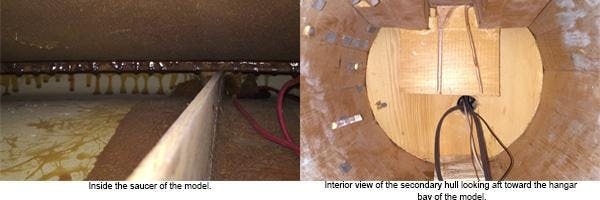
To analyze the model’s original materials and understand how they are aging, metal sections of the model were analyzed with X-ray fluorescence (XRF) and plastic sections were sampled and sent to the Art Conservation department at SUNY – Buffalo State in Buffalo, NY. Conservation scientists Dr. Aaron Shugar and Dr. Rebecca Ploeger used ??FTIR spectroscopy and ??XRF spectrometry to determine the specific adhesives and polymers used in the model’s construction. “Our analysis identified two original adhesives on the secondary hull: a clear poly(vinyl acetate) and a brown animal glue bulked with barium, strontium, and calcium. The plastic bolt cover fin and nacelle ribbed end caps are made from clear poly(methyl methacrylate), commonly known as Plexiglas,” said Dr. Shugar.
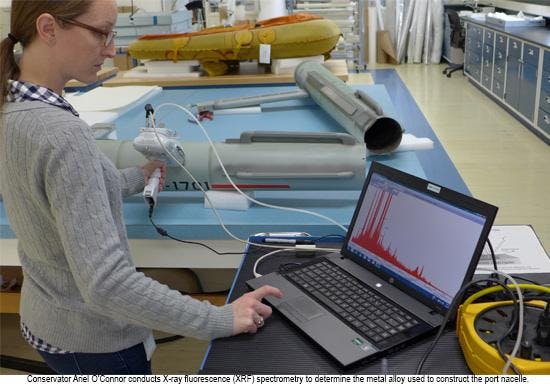
The saucer’s results were the most interesting. “The plastic was identified as Acrylonitrile-Butadiene-Styrine and poly(vinyl chloride) blend with lead and antimony. The lead could be from a pigment or used as a dryer, and the antimony is likely related to a fire retardant ABS-PVC blend,” confirmed Dr. Ploeger. “The saucer is lined with fiberglass composed of crystalline silica fibers and a bisphenol A-based epoxy.” Of particular note to current model-makers, the analysis supports the long-reported use of Royalite plastic in the saucer. The 1964 material matches the profile of several Royalite products (R-59 and R-63) available today.
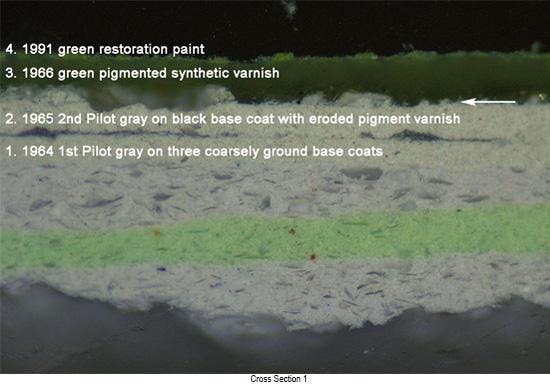
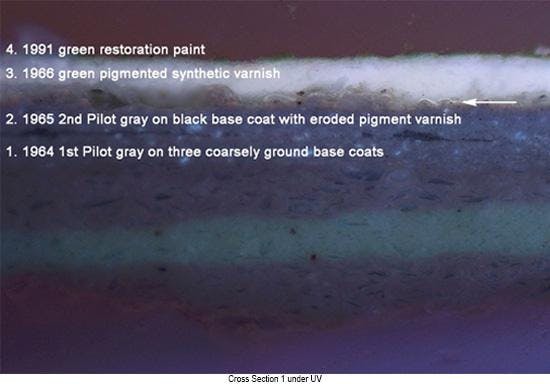
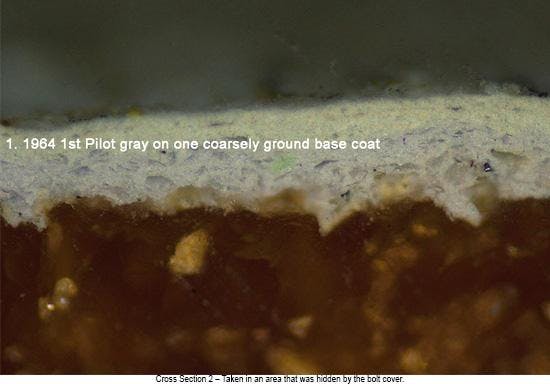
To understand the layers of paint applied to the model over the decades, microscopic cross-sections of the paint were sampled and studied by Dr. Susan Buck, a conservator specializing in the analysis of painted surfaces. The analysis revealed layers of paint from four generations of filming and four previous restorations. The only area with unaltered original paint, on top of the saucer, will be painstakingly cleaned and stabilized, but not altered. For areas repainted during previous restorations, a new base layer will be applied on top that exactly matches the original hull grey. “We don’t have to speculate about the original grey color,” says conservator Ariel O’Connor. “Our examinations have revealed a large section of original, first pilot-episode grey hidden and protected under the saucer bolt cover, and Dr. Buck’s analysis confirmed our findings.” Museum specialist Dave Wilson is precisely matching the color and sheen of the original grey.
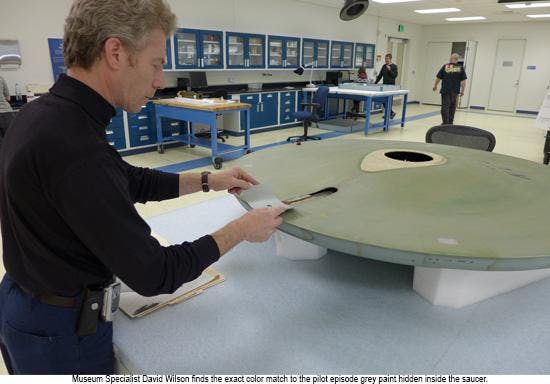
For the final touch of Hollywood magic, our Museum specialists Zabih Sadighian and Larry Berger are designing a safe LED system to light the windows from within the ship. The system uses flexible RGB LED NeoPixel strips that are adjustable and programmable remotely, allowing us to control the intensity, color temperature, and blink pattern to match original visual effects seen in the series.
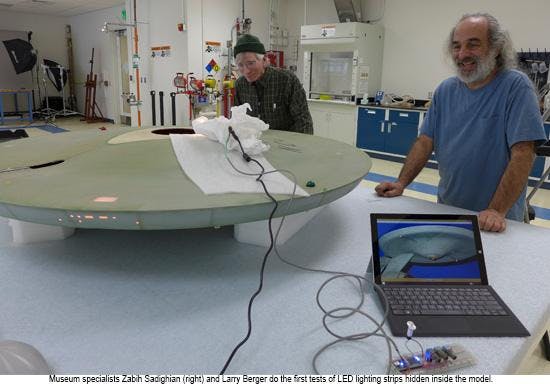
Check back on our AirSpace blog for more updates, from the model’s nuts and bolts to its new state-of-the-art climate-controlled display case. We hope you can come see the Enterprise this Saturday at the Udvar-Hazy Center. Make sure to share your photos from the Open House using #OpenUHC2016, and follow along throughout the day for updates from the event. If you’re unable to make our Open House, you can see the model this summer in its new home in the Boeing Milestones of Flight Hall.
This post originally appeared on the Smithsonian Nation Air and Space Museum's blog.

